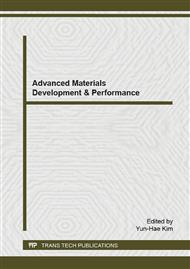p.88
p.92
p.96
p.100
p.107
p.113
p.118
p.125
p.130
Corrosion Rate of Steel in Fly Ash Concrete Containing Chlorides
Abstract:
In order to consider the durability of fly ash concrete against the chloride attack, quantitative evaluation of rebar corrosion rate in concrete is necessary. In this study, reinforced concrete specimens containing premixed chlorides were prepared, using concrete with cement or fine aggregate partly substituted by fly-ash. The corrosion rate of rebar embedded in the specimen was evaluated by measuring the polarization resistance which is an electrochemical corrosion index and one of the non-destructive techniques. As a result, the corrosion rate of rebar was greatly suppressed by admixing fly-ash at the environmental temperature of 20 degrees Celsius, while such suppression effect decreased with the rise of temperature to 40 degrees Celsius. The suppression effect was remarkable in the case of fly ash addition as the substitution of fine aggregate. Moreover, in the experimental conditions of this study, the influence of a variation of the chloride content in concrete on the corrosion rate of steel in concrete was not so significant. The influence of environmental temperature on the corrosion rate could be evaluated by an existing formula in the case of non-fly ash concrete, but the error became relatively high in the cases of fly ash concrete.
Info:
Periodical:
Pages:
107-112
Citation:
Online since:
June 2015
Authors:
Keywords:
Price:
Сopyright:
© 2015 Trans Tech Publications Ltd. All Rights Reserved
Share:
Citation:


